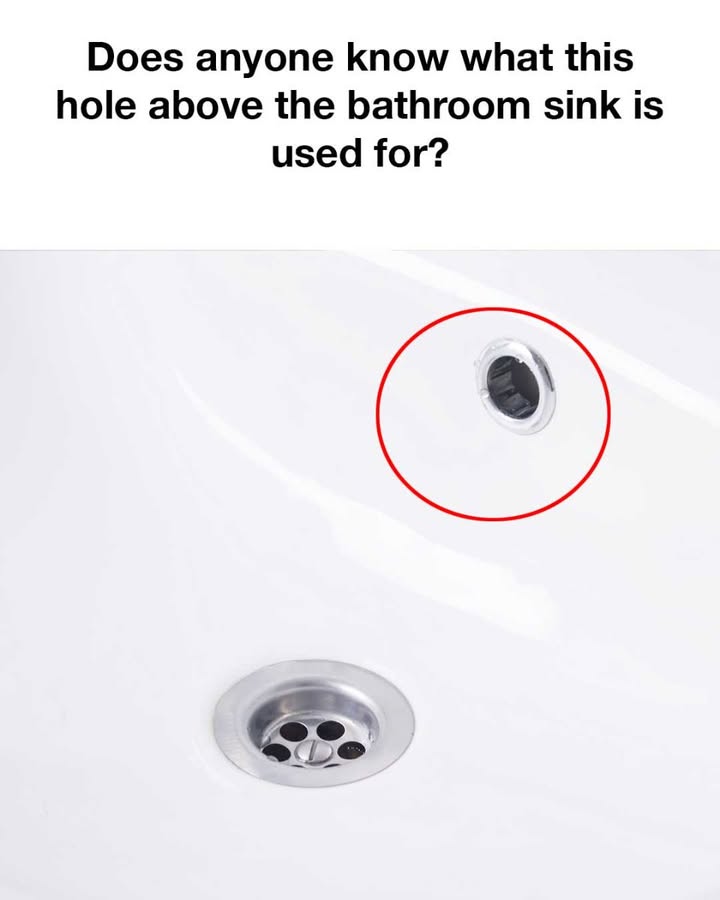If you’ve ever taken a close look at your bathroom sink, you might have spotted a small hole just beneath the faucet and above the basin—one that most people overlook and assume is just part of the design. While it might seem like a minor or even decorative feature, that little hole actually serves a very important purpose. It’s known as the overflow drain, and its job is to prevent your sink from flooding if the main drain gets clogged or if someone accidentally leaves the water running.

Despite how unnoticed it is in daily life, this hole is a key element in the overall plumbing design of your bathroom sink. Many people come up with their own theories about what it does. Some believe it’s simply a vent, others assume it helps water drain more quickly, and some think it’s there as a safety precaution to stop water from spilling over the sink’s edge. These guesses all circle the truth, but the actual function of the overflow drain is more practical and far more critical than most realize. It provides a secondary route for water to escape if the main drain isn’t doing its job—either because of a blockage or because the sink is filling faster than it can empty. When this happens, the overflow drain kicks in and directs the excess water back into the plumbing system instead of letting it spill out onto your bathroom floor. This helps protect your floors, cabinetry, and walls from the kind of water damage that can be expensive and time-consuming to fix. The concept of the overflow drain has been around for a long time, and it came about as plumbing systems became more advanced. Older sink designs were little more than basins with no safeguards in place, so if the water wasn’t turned off or the drain clogged up, there was nothing stopping the water from overflowing.
As indoor plumbing improved and homes became more sophisticated, designers saw the need for a failsafe—and the overflow drain became a standard feature. It’s now considered a basic but essential part of bathroom sink design, helping to make your home safer and more reliable. Though the function remains the same, overflow drains can look different depending on the sink. Some are easily visible, placed directly opposite the faucet, while others are tucked to the side or blended in to match the sink’s style. Some sinks even hide the overflow completely within the structure of the basin. Regardless of how it looks or where it’s placed, the drain always serves the same important function—to catch and redirect water before it becomes a problem. Like any part of your plumbing, the overflow drain can run into issues.
Over time, it may become clogged with soap scum, hair, or mineral deposits, especially if you have hard water in your area. If you notice water draining slowly or if water seems to be backing up around the sink, it might be time to clean out the overflow. A small brush, a pipe cleaner, or even a gentle rinse with a bit of vinegar and warm water can usually do the trick.
And while regular cleaning is important, it’s also smart to avoid pouring harsh chemicals down the drain, as they can corrode the pipes and damage your plumbing over time. If problems persist, it’s a good idea to consult a plumber. To keep your sink in top shape, make it a habit to check the overflow drain every few months and give it a quick clean. That small bit of maintenance can go a long way in preserving your sink’s functionality and avoiding bigger issues down the road. In the end, that tiny hole above your sink is far from useless—it’s a silent guardian that helps prevent flooding and protects your bathroom from unexpected damage. So next time you glance at your sink, give a little credit to the overflow drain. It might be small, but it plays a big role in keeping your bathroom dry and your home safe.





